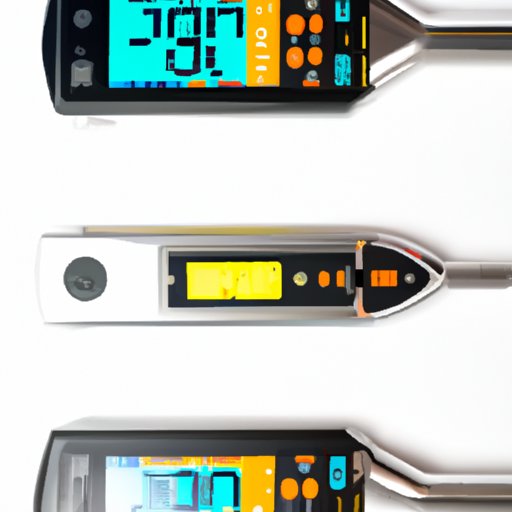Introduction
Thermometers are essential tools in every kitchen, and their accuracy is crucial for food safety and quality. Inaccurate thermometers can lead to undercooked or overcooked food, increasing the risk of foodborne illnesses or ruining the texture and flavor of dishes. Therefore, it’s essential to calibrate your thermometer regularly to ensure its accuracy. This article will guide you through the process of calibrating your thermometer, including different types of thermometers, calibration methods, step-by-step instructions, and expert advice.
Why Calibrating Your Thermometer is Critical for Food Safety: Tips and Tricks
Food safety is a top priority for every kitchen, and inaccurate thermometers can pose a significant risk to food safety. If your thermometer reads the wrong temperature, it can lead to undercooked or overcooked food, which can cause foodborne illnesses. Factors that affect the accuracy of thermometers include age, use, exposure to extreme temperatures, and physical damage. Therefore, calibrating your thermometer regularly can prevent foodborne illnesses and ensure consistent cooking results.
Different Types of Thermometers and How to Calibrate Them
There are various types of thermometers available, depending on the application and intended use. Some common types of thermometers include digital instant-read thermometers, dial thermometers, and thermocouple thermometers. Calibration methods also vary depending on the type of thermometer, and some common methods include ice-point calibration, boiling-point calibration, and comparison to a reference thermometer. Each method has its pros and cons, and the choice of calibration method depends on the type of thermometer and personal preferences.
A Beginner’s Guide to Calibrating Your Thermometer: Step-by-Step Instructions
Calibrating your thermometer is a simple process that can take just a few minutes. All you need to calibrate your thermometer is a container of ice water and a container of boiling water. Fill one container with ice water and another container with boiling water, and insert the thermometer probe into each container. The thermometer should read 32 degrees Fahrenheit in the ice water and 212 degrees Fahrenheit in the boiling water. If the thermometer does not read these values, adjust its calibration according to the manufacturer’s instructions.
How to Check If Your Thermometer is Accurate and What to Do If It’s Not
Checking the accuracy of your thermometer is essential to ensure consistent cooking results. You can check the accuracy of your thermometer by comparing it to a reference thermometer or a calibrated one. If you find that your thermometer is inaccurate, you can adjust its calibration or replace it with a new one. It’s essential to follow the manufacturer’s instructions when adjusting the calibration of your thermometer, as each thermometer has its specific process.
The Importance of Proper Thermometer Calibration in Sous Vide Cooking
Sous vide cooking requires precise temperature control, and therefore, accurate thermometers are crucial to achieve the desired results. Inaccurate thermometers can lead to undercooked or overcooked food, ruining the texture and flavor of the dish. Therefore, calibrating your thermometer regularly is essential to ensure the consistent quality of your sous vide dishes.
Common Mistakes to Avoid When Calibrating Your Thermometer
Calibrating your thermometer requires a careful process to ensure its accuracy. Some common mistakes that people make when calibrating thermometers include using the wrong type of calibration method, using insufficient materials, and not following the manufacturer’s instructions. To avoid these mistakes, it’s essential to read the user manual carefully, use the right materials, and follow the steps precisely.
Expert Advice: How Chefs Calibrate Their Thermometers for Perfectly Cooked Meals
Professional chefs rely on accurate thermometers to deliver consistent and perfectly cooked meals. Chefs recommend calibrating your thermometer regularly, using calibration tools designed for the specific type of thermometer, and replacing the thermometer if it’s no longer accurate. Moreover, chefs also suggest using multiple thermometers to check the temperature of different areas of the food to ensure even cooking results.
Conclusion
Calibrating your thermometer is a crucial aspect of food safety and quality. Inaccurate thermometers can pose a significant risk to food safety and ruin the texture and flavor of the dish. Therefore, it’s essential to calibrate your thermometer regularly, using the right materials and following the manufacturer’s instructions. By following the tips, tricks, and step-by-step guide in this article, you can ensure the accuracy of your thermometer and create consistently delicious meals.
